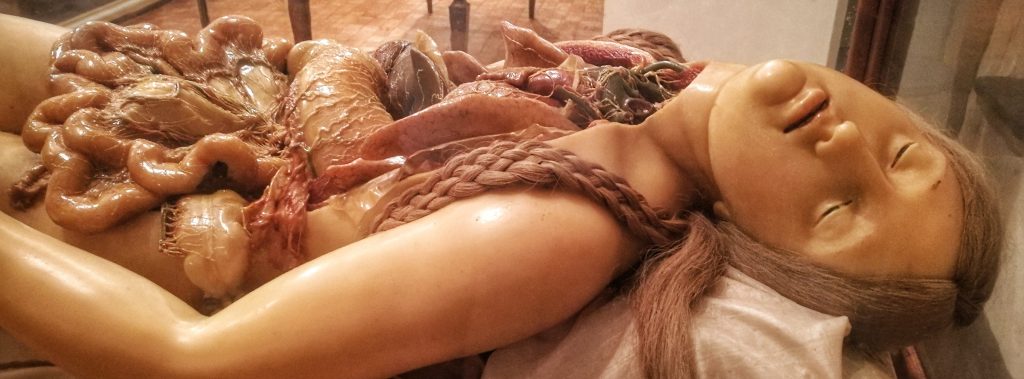The room is dedicated to Antonio Scarpa, doctor and anatomist; he was a student of Giambattista Morgagni and was called to Pavia to hold the chair of anatomy in 1783, at the height of the season of reforms started by Maria Teresa of Austria that were transforming the University into one of the most avant-garde education centers in Europe.
Under the guidance of Scarpa and his successors, the anatomical collection started in 1772 by Giacomo Rezia would become an extraordinary tool for teaching and research. On display, you will find some selected pieces of Scarpa and of his successors (in particular those of Bartolomeo Panizza) which are part of the anatomical and anatomo-pathological collections of Scarpa’s original museum, and several boxes of surgical instruments donated to Scarpa by Emperor Joseph II himself. Two anatomical wax models, impressive work of the Florentine wax modeller Clemente Susini, demonstrate the fundamental educational aim of the museum.
Other pieces exhibited in the room come from other collections of Scarpa’s time, such as the Natural History Museum, first started by Lazzaro Spallanzani, and introduce visitors to the more general scientific-cultural context of the time.

Venus, wax model by Clemente Susini
